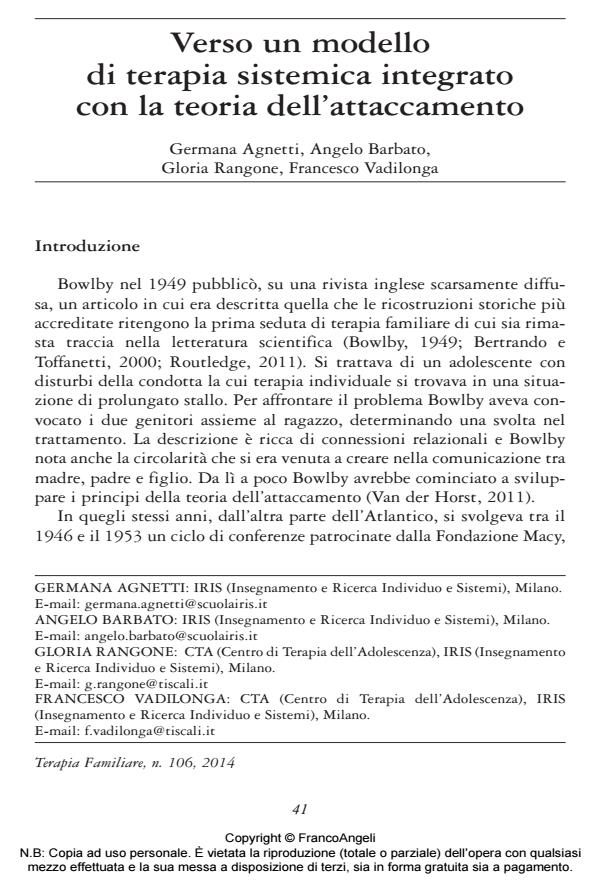Verso un modello di terapia sistemica integrato con la teoria dell’attaccamento
Journal title TERAPIA FAMILIARE
Author/s Germana Agnetti, Angelo Barbato, Gloriana Rangone, Francesco Vadilonga
Publishing Year 2015 Issue 2014/106
Language Italian Pages 31 P. 41-71 File size 240 KB
DOI 10.3280/TF2014-106002
DOI is like a bar code for intellectual property: to have more infomation
click here
Below, you can see the article first page
If you want to buy this article in PDF format, you can do it, following the instructions to buy download credits

FrancoAngeli is member of Publishers International Linking Association, Inc (PILA), a not-for-profit association which run the CrossRef service enabling links to and from online scholarly content.
Concepts and methods derived from attachment theory, because of their theoretical coherence and clinical efficacy, are very suitable for integration with psychotherapies based on a systemic models. The authors first discuss current models based on such integration and examine the related outcome studies, then present their approach and its application to a variety of clinical settings. Last, the authors present the preliminary steps of a project in progress about the manualization of psychotherapy of adoptive families including severely traumatized children.
Keywords: Family Therapy Integrated with Attachment Theory, Attachment Measures, Metacognition, Manualization.
Germana Agnetti, Angelo Barbato, Gloriana Rangone, Francesco Vadilonga, Verso un modello di terapia sistemica integrato con la teoria dell’attaccamento in "TERAPIA FAMILIARE" 106/2014, pp 41-71, DOI: 10.3280/TF2014-106002